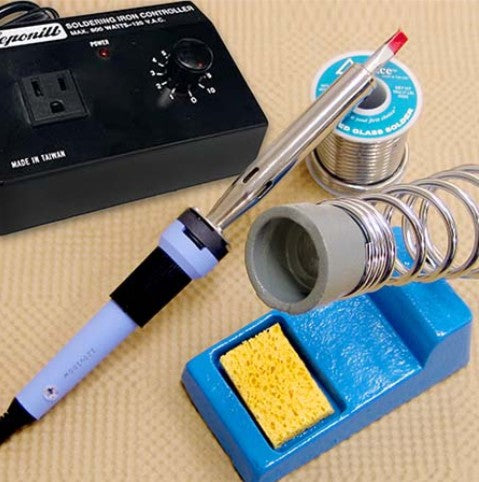
What is the optimal soldering iron temperature?
The ideal soldering iron temperature for stained glass varies depending on the type of solder you are using and your soldering speed. Here's a breakdown based on commonly available information:
For lead solder (like 60/40 or 50/50):
- Beginners or those who solder slower should start with a lower temperature, around 360°C (680°F).
- As you gain experience and speed, you can gradually increase the temperature to around 410°C (770°F).
- Some experienced users find 700°F or 800°F effective for lead solder, with 800°F offering faster melting but also potentially melting lead came more quickly.
For lead-free solder:
- A higher temperature is generally needed for lead-free solder, starting around410°C (770°F). You might need to go even higher, up to 460°C (860°F) for optimal flow.
Important Considerations:
- Solder Type: 60/40 solder is widely used and generally considered easier to work with, especially for beginners using copper foil. 50/50 solder, which has more lead, is often preferred for lead came projects but may require a higher iron temperature or slower working speed.
- Soldering Speed: The slower your soldering speed, the lower you can set your iron temperature. If you work quickly, you'll need a higher temperature to ensure the solder flows properly and avoids a chunky appearance.
- Iron Type: Irons with adjustable temperature controls allow you to fine-tune the temperature for different tasks. Weller irons use replaceable tips for different preset temperatures (e.g., #7 for 700°F and #8 for 800°F).
- Flux: Always use flux with stained glass soldering. Flux helps clean the surface and allows the solder to flow smoothly.
- Practice: Experiment on scrap pieces of foiled glass to find the temperature that works best for your specific solder, iron, and technique.
In summary, there is no single "correct" temperature. Start with the recommended range for your solder type (lower for leaded, higher for lead-free) and adjust the temperature based on how well the solder flows and your working speed. The goal is to achieve smooth, even solder beads without overheating the glass or burning the flux.